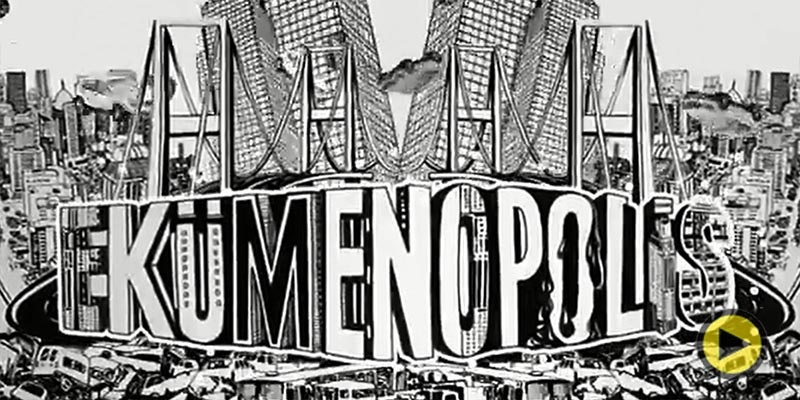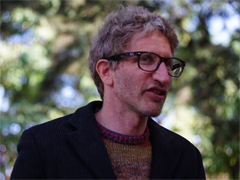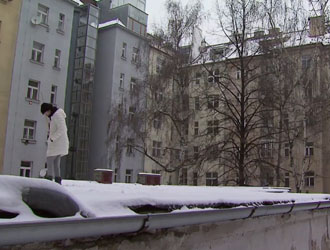If cities are a reflection of human society, what does Istanbul say about humans? What kind of city will future generations inherit? “Ecological limits have been exceeded. Economic limits have been exceeded. Demographic limits have been exceeded. Social cohesion is lost. This is the picture of neoliberal urbanisation: Ecumenopolis”.
Ecumenopolis: from the Greek οικουμένη (“world”) and πόλις (polis, which means “city”), and hence “a city comprised by the whole world”.
The term ecumenopolis was coined in 1967 by the Greek urban planner Constantinos Doxiadis who, in the light of figures detailing demographic and urban expansion, envisaged that cities would end up fusing into a single global megalopolis. The word has now been taken as the title of this documentary on urban-planning developments in Istanbul, one of the biggest (if not the biggest, and certainly competing with London and Moscow) European metropolises, with fifteen million inhabitants and an area of 1,538 square kilometres. Its growth hitherto (a population that has almost doubled in two decades) and equally staggering forecasts (indicating that it could double again in the coming decade) mean that the majority of the most pressing issues affecting European cities are all concentrated in this one city.
Ekümenopolis begins with an overview of Istanbul’s recent history. While it has some unique features, this history is in many ways similar to that of any other large European capital: a thriving centre dating from the beginning of the twentieth century, Haussmann-style boulevards for automobiles, migration of the rural population to the city, and sprawling suburbs among them. The film then goes on to show how powerful economic interests are leading Istanbul towards the “global city” model, and how the resulting urban planning conflicts with the interests of many citizens.
Ekümenopolis portrays Turkey as being subject to neoliberal policies which started in the 1980s, encouraging a series of privatisations that aimed to shape a new urban landscape. Owing to its geostrategic situation, Istanbul was to become a financial, commercial and cultural capital straddling Europe and Asia, a plan that was supposed to be accomplished by applying all the strategies in the neoliberal manual in order to attract foreign investment and generate nodes of development. The scheme entailed reconversion of run-down areas – which had grown very fast with a proliferation of shantytowns known as gecekondu — into premium residential and business centres, promotion of large-scale infrastructure like the third bridge over the Bosporus or the ambitious Galataport project, passing new regulations to fit the development need, commissioning world-famous architects for new projects, opening shopping malls and conference centres, establishment of financial districts and any other measure deemed “necessary” by economic powers protected by an authoritarian government.
The documentary holds that these policies lead to gentrification, disregard social housing policy, cause property bubbles, show contempt for public transport and sustainability, and entail various kinds of collateral damage which thwart rational, coherent urban planning.
One of these undesirable effects is unquestionably the absence of public space. Although the documentary does not explore the question in detail by means of data and relevant facts, it does make implicit reference to it through the standpoints it chooses, a basic technique of any film maker. The streets of the old neighbourhoods of the city, which are far from being in perfect condition, are filmed from the pedestrian’s point of view in order to highlight the vitality of their social and commercial life but, in contrast, the new zones of the expanding city are shown from a bird’s-eye view complete with bombastic symphonic music. Public space is thereby derided in being treated as mere residual emptiness between buildings, requiring regulation but barren in terms of monetary profit. From a distance, it is impossible to see what kind of life occurs in these spaces, yet it is clear that they do not encourage any kind of social interaction. It would seem that the government’s views on public space would fit with those of the construction magnate Ali Agaoglu, who believes that social life should be confined to the private domain of the gated community and luxury shopping malls. After all, “everyone deserves to live in a house with a swimming pool”.
It is significant that, only two years after the documentary was filmed, the spark that set off the demonstrations for more social rights was the project of constructing such a representative public space as Gezi Park. Paradoxically, the brutal repression of the demonstrators gave rise to a radically new use of public space which began with the “standing man” and then evolved into a new form with the Taksim Square book club.






